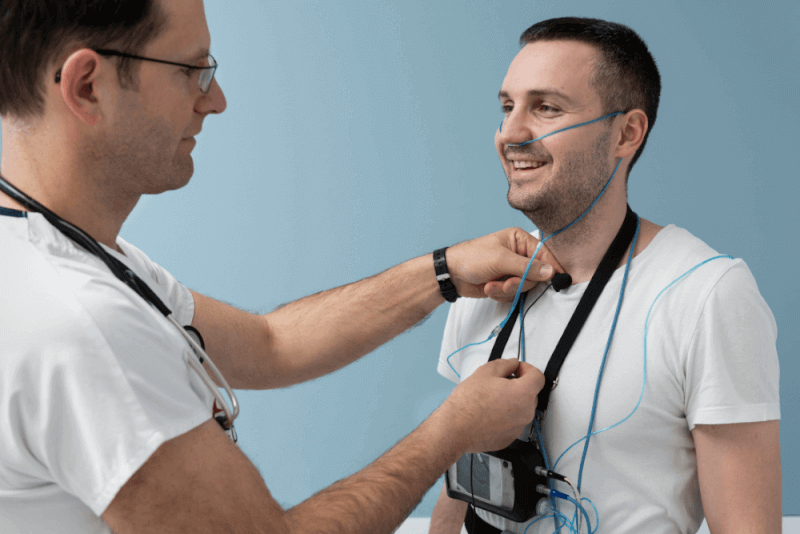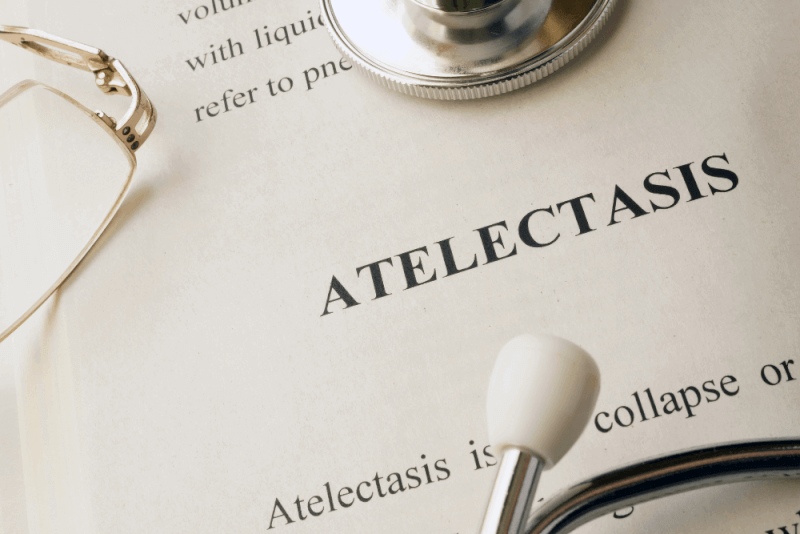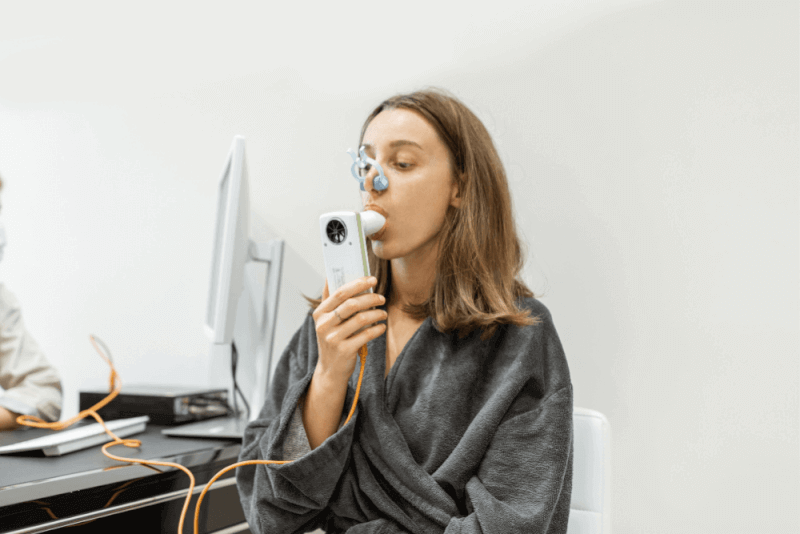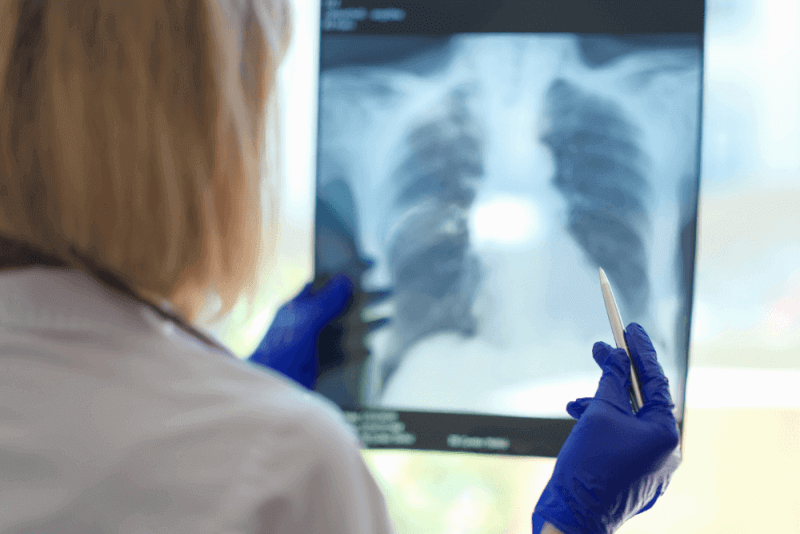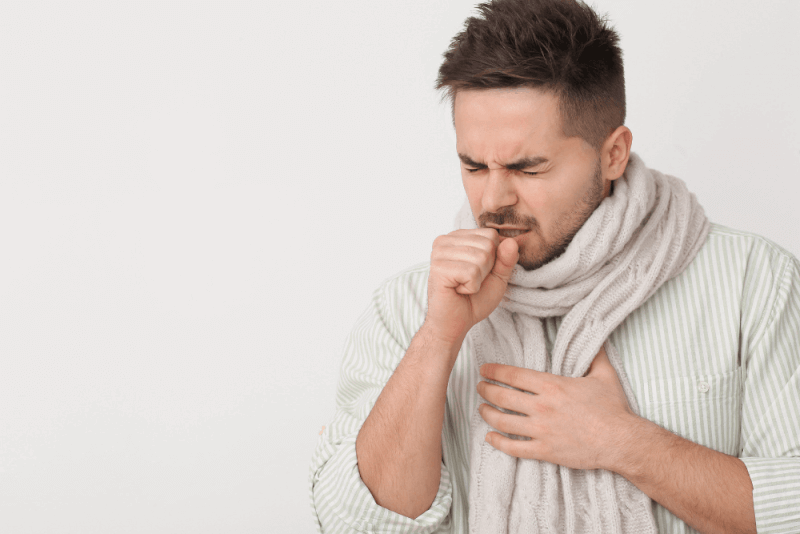What is a Sleep Test (Polysomnography)?
A sleep test, also known as polysomnography, is a procedure that monitors and records how the body's systems function during sleep. This test tracks activities in the body, including the brain, heart, and respiratory systems. It provides specialists with comprehensive information about sleep quality.
Why is a Sleep Test (Polysomnography) Performed?
The primary purpose of a sleep test, which is one of the diagnostic tests, is to identify health problems or to rule out potential issues. If symptoms that affect sleep are noticed, the test helps to understand the cause and plan the necessary treatment.
Additionally, sleep tests are used to assess the effectiveness of completed treatments. Health issues affecting sleep are often related to the nervous, respiratory, brain, and heart systems. The following are some of the health problems that may necessitate a sleep test:
- Sleep apnea
- Periodic limb movement disorder
- Narcolepsy
- Insomnia
- Disruptive sleep disorders
- Certain types of seizures
- Epilepsy
- Sleep paralysis
- Night terrors
- Sleepwalking
- Sleep behavior disorders
- Nocturnal panic attacks
- Parasomnias
How is a Sleep Test (Polysomnography) Conducted?
Most sleep tests are conducted during normal sleep hours. Since most people sleep at night, the facilities conducting these tests typically schedule them for nighttime.
However, for those who work at night and sleep during the day, the test is conducted during daytime hours. Multiple devices are used in sleep tests to collect and analyze data.
These sensors allow a comprehensive examination of all aspects of sleep. The sensors and monitoring methods used in a sleep test include:
- EEG to measure electrical activity in the brain
- EKG to measure electrical activity in the heart
- EMG to monitor muscle movements
- EOG to monitor eye activity
- Respiratory sensors to monitor air activities in the mouth and nose
- Respiratory inductive plethysmography belts to monitor chest and abdominal expansion during breathing
- Pulse oximetry
- Video and audio monitoring
When the test is conducted, sleep rooms are prepared specifically for each patient. Patients are placed in these rooms, and sensors are attached. Some of the sensors are self-adhesive, while others require tape for stabilization.
Therefore, if there is an allergy to adhesive, it should be reported. After the sensors are attached, patients are asked to follow a few instructions to calibrate the sensors. The cables attached to the sensors should be long enough to allow comfortable movement in bed.
However, if the patient needs to get out of bed, assistance should be sought from the specialist to remove the sensors. Most people who undergo a sleep test do not sleep comfortably during the test. The unfamiliar environment and sensors can affect sleep, but this does not impact the data obtained from the test.
After the patient falls asleep, specialists monitor the following data:
- If a cable or sensor becomes loose, the patient is awakened to reattach it.
- If signs of a seizure or another serious condition appear during the test, necessary medical intervention is performed.
What Values Are Measured During a Sleep Test (Polysomnography)?
The measurements recorded during a sleep test provide various information about sleep patterns. These include:
- Brain waves and eye movements during sleep help the medical team evaluate the sleep stage. It is possible to identify disruptions in these stages. The presence of these disruptions can be indicative of sleep disorders such as narcolepsy or REM sleep behavior disorder.
- Changes in heart and respiratory rates during sleep, as well as fluctuations in blood oxygen levels, may indicate sleep apnea.
- Using PAP or oxygen, determining which device setting is suitable for the patient is necessary if the device is to be prescribed for home use.
- Frequent leg movements that can disrupt sleep may indicate periodic limb movement disorder.
- Unusual movements or behaviors during sleep may be a sign of REM sleep behavior disorder or another sleep disorder.
The data obtained from the sleep test is initially evaluated by a polysomnography technician. Various charts are used during this evaluation. The results are then forwarded to a specialist doctor.
What to Consider Before a Sleep Test (Polysomnography)
There is no need to alter your daily routine before a sleep test. However, paying attention to certain points can help ensure more accurate results. These include:
- Avoid consuming caffeine and alcohol for at least 8 hours before the sleep study.
- Avoid napping during the day.
- Try to stick to your daily routine as much as possible.


